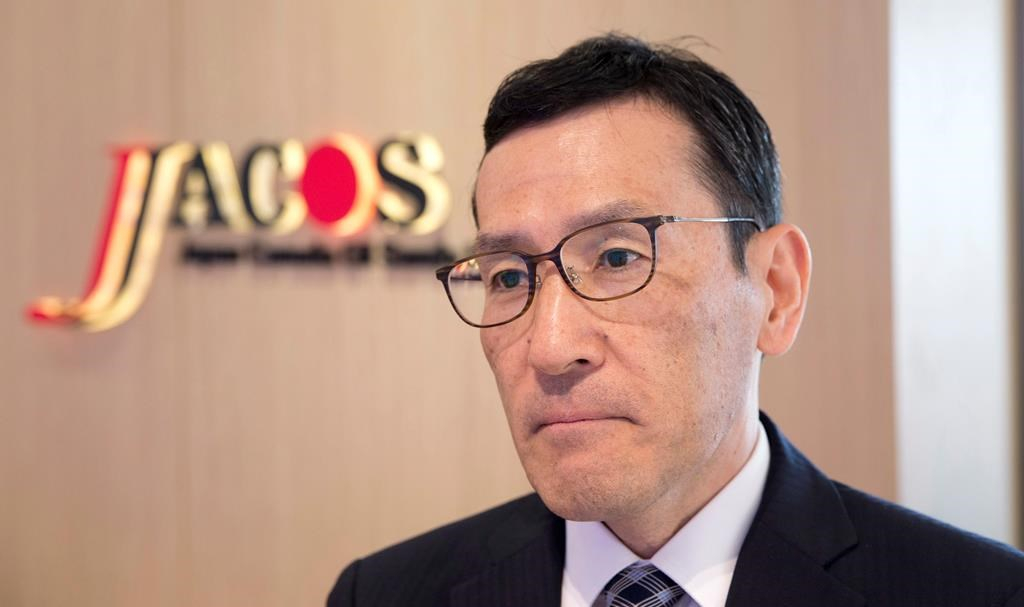Support strong Canadian climate journalism for 2025
When it comes to talking about how the northern Alberta oilsands have lost their lustre for foreign investors, Satoshi Abe sounds a lot like his Canadian counterparts.
"I think Canada itself creates significant barriers to new investment," said the president of Japan Canada Oil Sands Ltd. or JACOS, reached at his Calgary office.
"Additional investment in Canada will only become attractive once there is sufficient egress of its resources and more certainty around its regulatory processes, which we are clearly lacking."
The foreign content of the Alberta oilsands has been thinned over the past four years, but not eliminated.
Oilsands output attributable to non-Canadian companies rose from about 320,000 barrels per day in 2010 to 647,000 bpd in 2014, then slipped back to about 573,000 bpd in 2018, according to a Canadian Press analysis of Alberta Energy Regulator production numbers.
The foreign working interest percentage varied from 22 per cent of total oilsands production of 1.44 million bpd in 2010, to just under 33 per cent of 1.98 million bpd in 2014, and about 20 per cent of 2.9 million bpd in 2018.
The decision by Oklahoma-based Devon Energy Corp. to sell its Jackfish thermal oilsands project (2018 output of 100,000 bpd) to Calgary-based Canadian Natural Resources Ltd. earlier this year drops that percentage to roughly 16 per cent.
While European and American companies such as Royal Dutch Shell, Statoil (now Equinor), Total, ConocoPhillips, Marathon Oil and Murphy Oil have been backing away from their oilsands exposure, Tokyo-based JACOS has been raising its bets.
It was part of a group of companies conducting oilsands extraction experiments starting in 1978, more than 40 years ago.
It opened a small-scale thermal pilot project in 1999 and produced a cumulative total of 35 million barrels of bitumen by 2015, when it was shut down as a precaution during the wildfires that destroyed parts of Fort McMurray.
Instead of restarting the pilot, the company elected to go ahead with its long-planned $1.8-billion, 20,000-barrel-per-day Hangingstone expansion project, which began producing in 2017.
Better-than-expected results from its wells, where steam is employed to thin the sticky bitumen before it is pumped to surface, have boosted production to well above design, at about 29,000 bpd, Abe reported.
The 12 foreign companies left with commercial oilsands production in Alberta now are composed of three from the U.S. (ConocoPhillips, Exxon Mobil, Chevron), three from China (CNOOC or China National Offshore Oil Corp., PetroChina, Sinopec), and one each from Britain (BP), the Netherlands (Shell), France (Total S.A.), Hong Kong (Sunshine Oilsands), Japan (JACOS) and South Korea (Harvest Operations).
The Canadian Press foreign production analysis found the non-Canadian company with the highest oilsands production in 2018 was one of its most reluctant participants, Paris-based Total.
When the French firm announced a deal last year to sell its undeveloped Joslyn oilsands mining project to Canadian Natural, CEO Patrick Pouyanne made it clear oilsands were not the high priority they once were.
"Reducing our exposure to Canada's oilsands by selling this asset is in line with our global strategy to focus our oil investments on low-break-even resources and develop a resilient portfolio in the mid and long term," he said in a news release.
He added the same rationale was used in cutting its stake in the Suncor Energy Inc.-led Fort Hills oilsands mining project to 24.6 per cent from 29.2 per cent in 2017.
Still, Total's share of Alberta oilsands production in 2018 was higher than any other foreign company at an average of about 101,000 bpd — 32,000 bpd from Fort Hills and nearly 69,000 bpd from its 50 per cent stake in the Surmont thermal project operated by its partner, Houston-based ConocoPhillips.
The next largest foreign oilsands owner is CNOOC, which picked up a 25 per cent interest in the JACOS assets, a 7.2 per cent interest in the Syncrude oilsands mine and ownership of the Long Lake thermal project when it bought Calgary's Nexen Energy for $15.1 billion in 2013.
It produced about 71,000 bpd in 2018, little changed from 66,800 bpd in 2014.
Next is ConocoPhillips at 69,000 bpd, and then Exxon Mobil with 65,000 bpd from its 29 per cent stake in the Kearl oilsands mine operated by its Canadian subsidiary, Imperial Oil Ltd.
A buoyant global oil market and an attractive resource with pipeline room and clear regulatory paths brought foreign players to Canada's oilsands a decade ago, says oilsands analyst Michael Dunn of GMP FirstEnergy.
The reversal of all of those factors is responsible for sending them away.
"In the oilsands, experience and scale account for so much and if it's not a growth area for you, if you're not committed to it, a lot of these entities have decided their efforts and time are better served elsewhere."
Companies in this story: (TSX:CNQ, TSX:SU, TSX:IMO)





Comments
Please tell me I'm not the only one cheering every time an oil sand company turns off the tap, an investor puts their hard earned dollars elsewhere and a pipeline dies ....